Cold formed steel framing: the smarter way to build for modern construction
⏱️ 8 min read
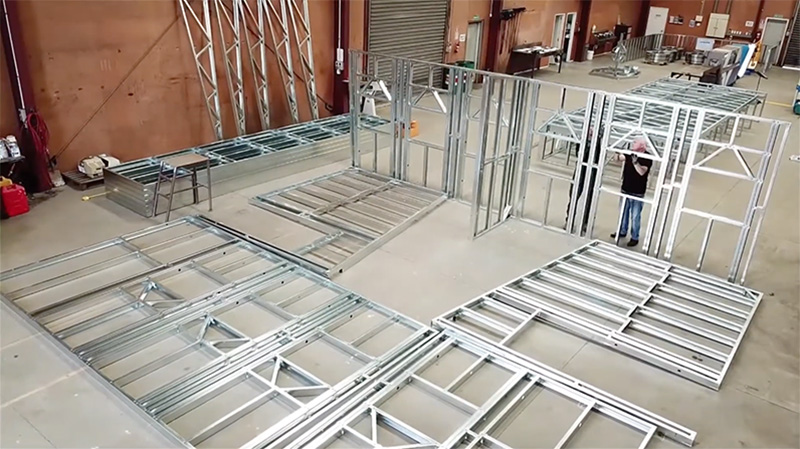
Cold formed steel framing (CFS) is no longer a niche method. It is fast becoming the go-to for forward thinking construction companies who understand that speed, precision, and scalability are not just nice-to-haves – they are critical for profitability.
At Howick, we have spent decades refining the roll-forming technology that makes CFS work harder for your business. In the US and globally, we are seeing a seismic shift in how modern buildings come together and cold formed steel framing is at the centre of that transformation.
“We're not just helping the industry build better buildings. We're helping them build smarter, faster, and more profitably.”
— Nick Coubray, CEO, Howick Ltd
No time to read? Here are the key take-aways:
-
Cold formed steel framing (CFS) is the future of construction. Faster, stronger, and more precise than timber or concrete, CFS enables rapid, efficient, and cost-effective building solutions.
-
CFS framing reduces waste and improves sustainability. Steel is 100% recyclable, with minimal onsite waste, making it a greener choice for modern builds.
-
Unmatched durability and resilience. CFS framing withstands fire (up to 1832°F / 1000°C), hurricanes (149m/h / 240km/h), and earthquakes (9.0 magnitude), outperforming traditional materials.
-
Precision means profit. Roll-formed steel framing is accurate to within 0.5 mm (1/64"), reducing rework, labour costs, and build time.
-
Perfect for modular, prefab, and hybrid construction. CFS framing is used for volumetric modular builds, pods, portal frames, and infill projects - transforming industry efficiency.
Table of Contents
- What is cold formed steel framing?
- Cold formed steel framing vs traditional methods
- Advantages of cold formed steel framing
- Applications for cold formed steel framing
- Why choose Howick for cold formed steel framing?
- Explore some of our range:
- Cold formed steel framing: frequently asked questions
- Build better with cold formed steel and Howick
- Useful Links
What is cold formed steel framing?
Cold formed steel framing uses high-strength steel sheet - typically between 0.75 mm (approx. 0.030") and 2.5 mm (approx. 0.098") thick - shaped at room temperature into structural components such as studs, tracks, joists and trusses using roll-forming machines.
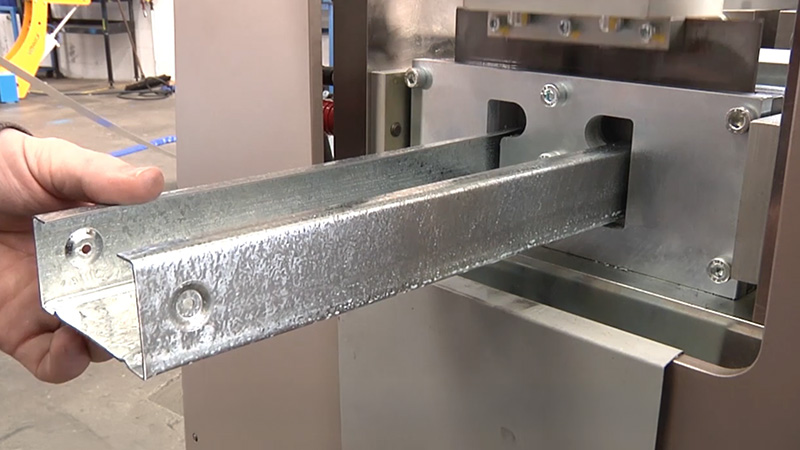
The cold forming process ensures high dimensional accuracy, uniform strength, and minimal waste. It is the framing method of choice for applications ranging from interior walls to modular volumetric builds, mid-rise structures, and large-scale prefab installations.
Unlike hot-rolled steel (which requires high-temperature processing), cold formed steel can be roll-formed on-demand using machines like the Howick FRAMA™ range or extended dynamically with our unique X-TENDA™ 3600 solution.
Cold formed steel framing vs traditional methods
Why smart builders are switching from timber, brick and block.
Cold formed steel framing delivers compelling advantages over timber and concrete-based construction methods:
-
Faster build times: components are precision-formed and pre-punched for rapid onsite assembly.
-
Less waste: up to 10x less waste than timber, reducing costs and environmental impact.
-
Greater design freedom: lightweight framing supports complex geometries and modular construction.
-
Superior durability: no warping, rotting or pests. Withstands fire, wind and earthquakes better than timber.
-
Higher ROI: more efficient processes, lower labour needs and fewer defects mean faster returns.
Case in point: In the Victoria Lane Apartments project, Howick’s telescopic X-TENDA™ 3600 panels cut installation time by 50% and dramatically reduced waste.
Advantages of cold formed steel framing
Precision = Profit
Howick roll-forming machines are accurate to within 0.5 mm. That means less rework, fewer onsite errors, and reduced schedule risk.
Speed and scalability
Projects like this Tauranga Library installation showcase just how fast Howick-formed frames go up. In some cases, builders are completing up to one home per day with minimal crew thanks to precise CFS kits.
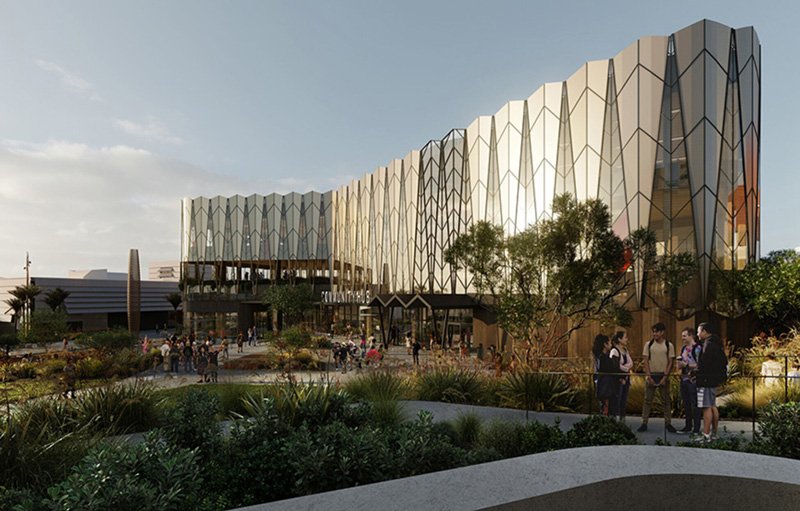
Render of Te Manawataki o Te Papa. Image: Tauranga City Council.
Fire and seismic resilience
Cold formed steel framing resists fire up to 1000°C (1832°F), won’t combust, and is proven to withstand winds of up to 240 km/h (149 mph) and earthquakes rated 9.0 on the Richter scale.
It’s why the US Navy Seabees rely on Howick technology in disaster recovery zones.
Sustainability
Steel is 100% recyclable, and unlike many other building materials, it can be recycled repeatedly without any loss of strength or quality. In fact, steel is the most recycled material in the world. According to the American Iron and Steel Institute, this makes steel framing a standout choice for environmentally responsible construction.
Applications for cold formed steel framing
CFS framing is not just for walls, it is the backbone of modern construction techniques, including:
-
Custom façade solutions
-
Hybrid timber-steel systems
Check out the Arkeo Saidia Villas project in Guadeloupe, where Howick technology powered high-end resort units with unparalleled build speed and style.
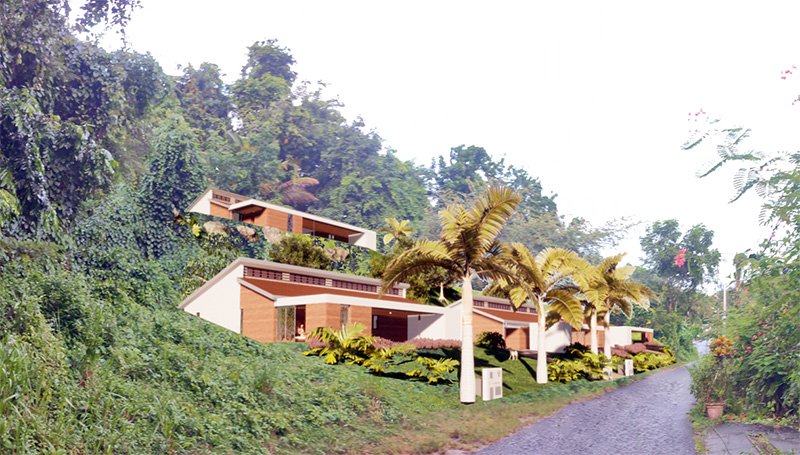
Image courtesy of ARKEO SYSTEM.
Why choose Howick for cold formed steel framing?
Designed for integration, built for performance.
When you're investing in CFS framing, your machine matters. Howick roll-forming systems are:
-
Accurate to the millimetre
-
100% New Zealand made
-
Supported globally by real experts
-
Software-agnostic (Revit, Tekla, FrameBuilder, Strucsoft etc.)
-
Free from license fees or meterage tolls
“From modular builds to telescopic retrofit framing, our technology helps teams do more with less. That’s how you scale construction without scaling complexity.”
— Nick Coubray, CEO, Howick Ltd
Explore some of our range:
-
FRAMA™ 3200 – fast-track interior and exterior framing
-
FRAMA™ 5600 – modular build powerhouse
-
FRAMA™ 7600 – for ultimate flexibility
-
FRAMA™ 7800 – for variable floor joist options
-
X-TENDA™ 3600 – for telescopic, extendable infill and retrofit walls
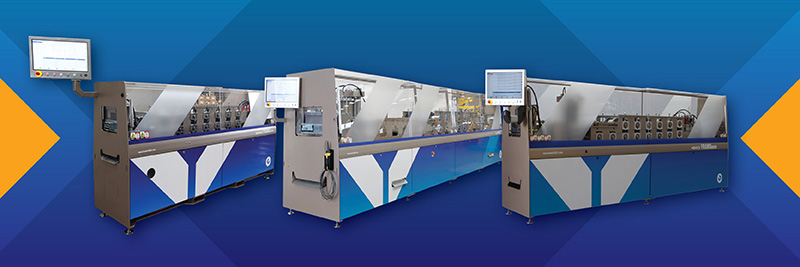
CFS framing - real projects. Real proof.
New Orleans, Louisiana, USA: Edward Hynes Charter School
The Edward Hynes Charter School project is a three-story steel structure building that required an innovative construction solution. Prefabricated CFS metal stud wall panels were used for 95% of the interior and 100% of the exterior walls. This maximised the quality of the construction project, efficiency of installation, and improved the overall schedule so markedly that the project was delivered three months ahead of time.
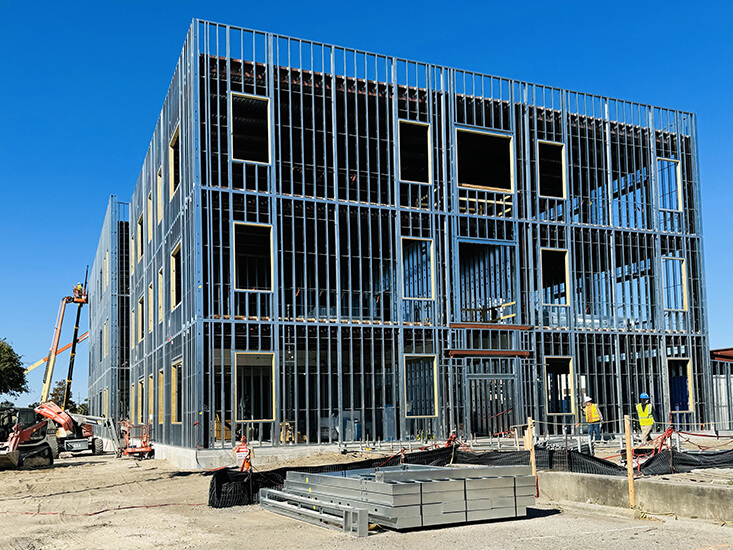
Image courtesy of SLS Building Systems.
Tauranga, New Zealand: Library and Community Hub
In NZ, Tauranga’s new Library and Community Hub is more than just a building – it is a bold vision for the future of sustainable construction. Designed to meet a world-class six Green Star rating, this project pushes the boundaries of efficiency and eco-conscious design. At the heart of this project is a commitment to sustainable construction and optimising every aspect to reduce the carbon impact, which is one reason why the team chose to use cold formed steel telescopic framing – more than 12.8km (8miles) of CFS steel framing in total.
Cold formed steel framing: Frequently asked questions
Is it suitable for load-bearing applications?
Yes. Howick’s advanced framing machines manufacture frames that can support mid-rise, seismic and hurricane-zone builds.
Can CFS work with my BIM workflow?
Absolutely. All Howick machines use open language control and integrate with leading CAD/BIM platforms.
Is it cost-effective?
CFS dramatically reduces build times, labour hours, and waste. ROI on Howick machines is often achieved in 12–18 months.
What is the environmental impact?
CFS is recyclable, precise, and produces far less waste than timber. It aligns with ESG strategies and green building goals.
Build better with cold formed steel and Howick
The construction world is changing. Those leading the charge are not just building faster, they are building smarter, safer and more sustainably.
At Howick, we are helping the industry make that shift, with cold formed steel framing technology trusted by innovators worldwide.
“With our systems, you're not buying a machine. You're investing in a smarter way to build.”